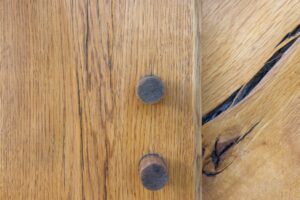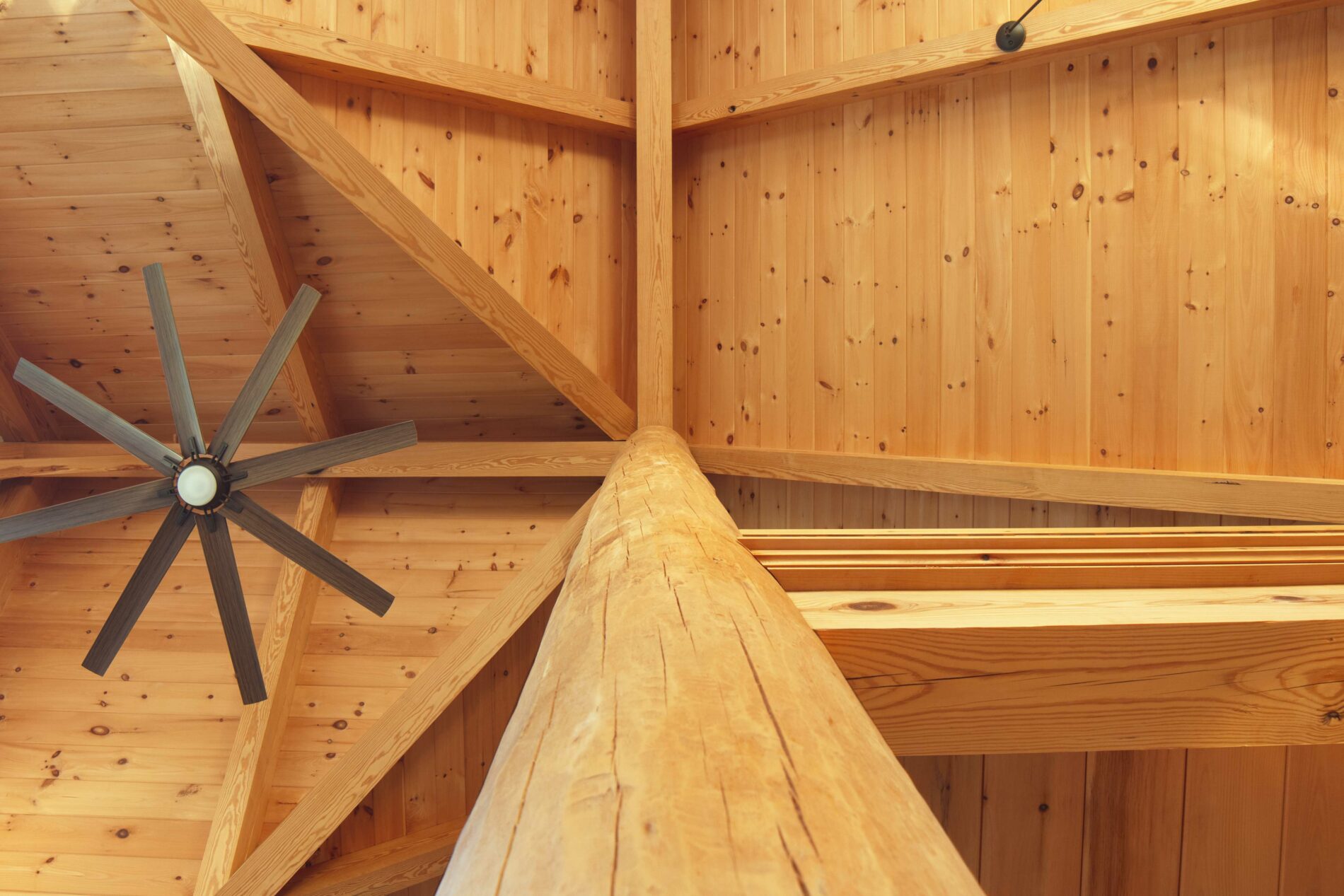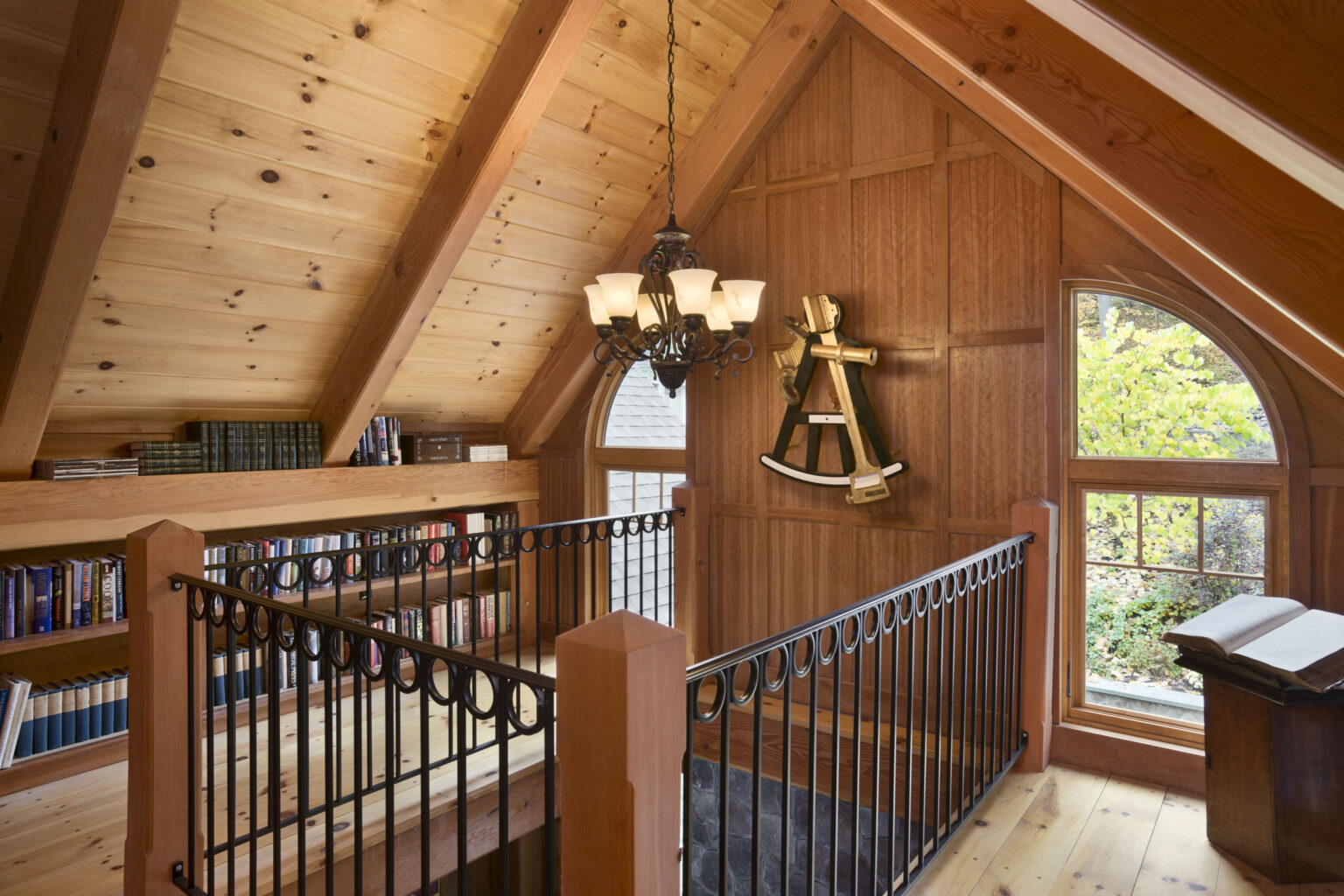The Best Wood Species for Timber Frame Homes: Then vs Now
When dismantling the historic timber-framed barns and shelters of the past, it’s common to discover a variety of different wood timbers making up the structural frame. When function – and not aesthetics – was invariably the priority, timbers easily accessible and indigenous to the immediate area were the most likely candidates. Poplar, maple, and beech might do the job – but so would a chestnut (considered extinct) or a walnut timber, too. Now, barn restorers and reclaimed flooring manufacturers would consider these a treasured find.
Today, accessibility is less of an issue. We have the means to ship timber from close or afar, which broadens our menu of choices. And single-species timber frames are standard – although not in every case. Our choices, if not dictated by engineering requirements for strength or length, are typically based more on the color, the stability, and the cost.
Wood Species: Deciduous Trees
In general, the trees from which the timber is extracted come in two categories: deciduous and coniferous. Deciduous trees are identifiable because they lose their leaves annually. Ash and maple fall into this category but are generally not chosen for timbers for various reasons. Other hardwoods favored by timber framers, like the oaks and cherry are very strong and attractive but difficult to find in high quality AND suitable sizes.
Checks and Cracks
All woods that are hard are more susceptible to “checking” as they dry. Checking is the cracking that forms along the vertical grain of the timber while it dries. Although all wood checks to a degree, it is not uncommon for hardwood to form a check deep and wide enough to insert the tips of your fingers. Checking does not necessarily affect the structural integrity of the timber – especially when care is taken to maintain the heart (the center where the growth rings begin) within the timber; this is referred to as a boxed heart. As a rule of thumb, it takes approximately one year to air dry one inch of timber – so, expect an occasional “crack” in the middle of the night during the first six to eight years of enjoying your timber framed home.
Wood Species: Coniferous Trees
Coniferous trees are the ones with cones and needles. Douglas fir, hemlock, white and yellow pine (including heart pine), spruce, cedar, and others are all viable timber frame choices. They are generally more plentiful, check less, and emit a pleasant scent for years. Considered “softwoods”, the name should not imply weakness.

Kiln- vs Air-Dried Wood
At this time, there are some facilities that kiln dry timber – but, unlike the scale of wood used in furniture, timber is very different in mass. Arguably, the methods are still rudimentary and can adversely affect the appearance and cell structure of timber. Since one cannot expect the kiln-dried appearance of fine furniture in timber, we opt to allow the timber to dry in place, set nicely in-housed joinery, and firmly snugged with wooden pegs.
Reclaimed Wood and Sustainability
Most timber suppliers are connected with forest management and replenishment programs, but if your conscience pulls you in the conservationist direction, recycled and reclaimed timbers offer an excellent alternative. Upon request, timbers that have enjoyed a previous life as a factory, a bridge, or a warehouse can be reused in your home or project.
Known for its character marks–bolt holes, rust stains, nail pocks, and more–reclaimed timbers can be used as-is or re-milled to give it a facelift and expose its lost inner beauty. Woodhouse® once shipped a recycled frame to Colorado that began as a train trestle. It was submerged for years and since recovered from the depths of the Great Salt Lake in Utah.
The recovery of reclaimed wood generally adds steps to the procurement process which therefore increases its cost over newly harvested timbers, but the results can be dramatic and unique.
For more information, download our wood species PDF, or call 800-227-4311.

